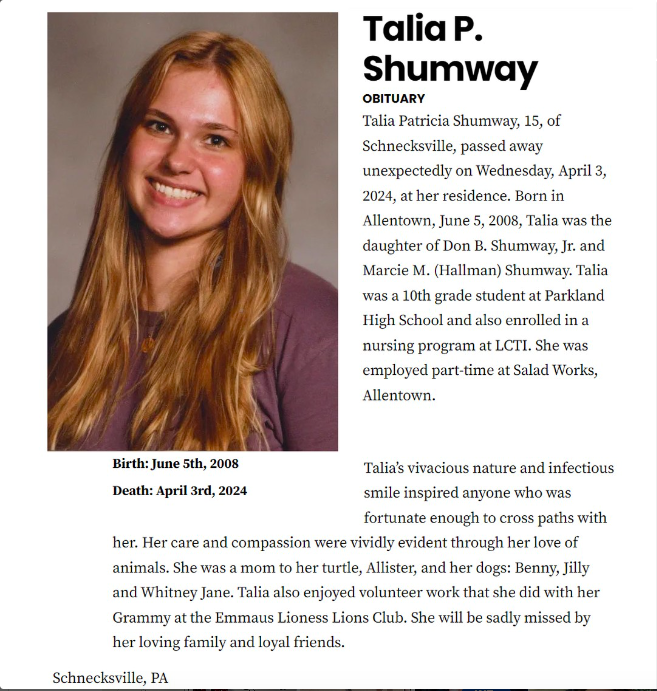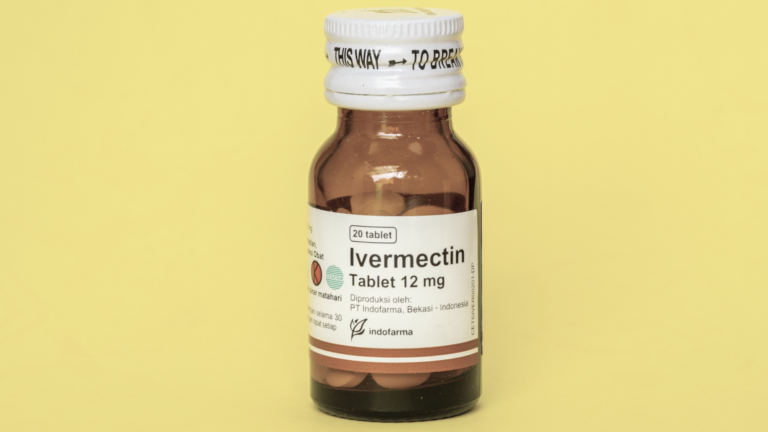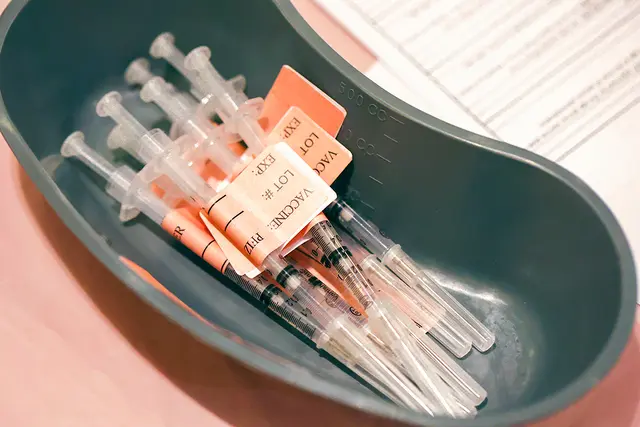COVID-19 Vaccines and Boosters Were Never Made With mRNA

The truth behind RNA-based vaccine technology (Part 1)
For the first time in human history, the gene regulatory program of healthy people has been manipulated on a massive scale.
Perspectives on Health
The gene regulatory program of healthy people has been manipulated on a massive scale for the first time in human history.
Despite what we’ve been told, RNA-based COVID-19 injections were made with modified RNA rather than messenger RNA (mRNA).
Modified RNA (modRNA) poses significant health risks.
These dangers are posed not only by COVID-19 injections and boosters, but also by all future RNA-based vaccines unless we speak up now.
mRNA and modRNA Are Not the Same
The two—mRNA and modRNA—are diametrically opposed.
mRNA is found in nature, lives in our cells for a short period of time, and is relatively fragile. It is a type of RNA that carries instructions or “messages” from our genes to aid in the production of proteins, which are the building blocks of our cells. It is continuously produced as a byproduct of normal cellular processes. Once the messages are delivered, mRNA’s job is done, and it is broken down in the body.
When RNA from another source enters our cells—for example, virus RNA—these cells can produce virus proteins.
COVID-19 injections, we’ve been told, are made with mRNA. A vaccine based on “natural” mRNA, on the other hand, would not last long enough to elicit an immune response before being destroyed by our immune system.
Scientists had to artificially modify mRNA to increase both its efficiency and lifetime before it could be used in routine medicine. The end result is modRNA.
modRNA has been designed to have a long life and maximum translation. While mRNA has a cell-specific expression pattern, modRNA can infiltrate almost any cell type.
How Did We Get Here?
The discovery of mRNA was announced in 1961, “in a climax of scientific excitement.” There had been previous “sightings” of this short-lived but essential RNA intermediary, all leading to a better understanding of how genes produced mRNA and its role in protein production.
In a nutshell, mRNA transports genetic instructions from the cell’s DNA to ribosomes, which then assemble a specific protein.
It wasn’t long before scientists started experimenting with using mRNA to help the body heal itself. Researchers injected natural (unmodified) mRNA into skeletal muscle of a mouse in 1990; the mouse produced a protein it would never produce naturally.
Following that, scientists discovered that transferring natural mRNA was inefficient. Although it worked in theory, it quickly degraded and could not be used effectively for treatment.
This discovery paved the way for synthetically or artificially modifying mRNA. Before the COVID-19 pandemic, the only goal of modRNA research was to reprogram and destroy cancer cells.
modRNA 101
How is RNA altered? Simply put, one of the four compounds in RNA is altered (for example, the natural nucleoside uridine is altered to produce synthetic/artificial methyl-pseudouridine). The modified RNA is then:
More stable (it stays in the body longer).
It is less immunogenic (it stimulates the innate immune system less).
ModRNA is more efficient (it produces more protein than mRNA).
In a laboratory, modRNA is created.
The therapeutic use of modRNA in humans poses both challenges and risks.
ModRNA contains a viral gene sequence, which is concerning. When modRNA enters a cell, it takes over the cell’s machinery and reprograms it to produce a viral protein, such as spike protein.
Perhaps most astonishing is that scientists knew that targeted delivery of modRNA was impossible when developing the COVID-19 vaccines and boosters. ModRNA cannot be directed at individual cells. As a result, it attacks perfectly healthy cells, even those that are protected by natural barriers such as the blood-brain barrier.
The continuous production of an artificial viral protein depletes the cell’s energy, disrupts its metabolism, and renders the cell incapable of performing its vital function for the organism as a whole.
Worse, because virus proteins are produced in them, our immune system destroys those cells.
Despite these serious flaws, Pfizer-BioNTech and Moderna have begun mass production of COVID-19 “vaccines” using modRNA.
The Body Responds Differently to Natural Infection Versus modRNA Injection
pike protein is well known to be a poison to our bodies.
In the case of a natural infection, our immune system will prevent the virus from infecting our body cells by neutralizing it with specific antibodies, with the possibility of cross-immunity being effective against virus variants as well.
Our immune system has no chance of preventing the lipid nanoparticles from transferring modRNA into our cells—all cells, not just those with the appropriate receptor for virus binding (as would be the case in natural infection).
The Virus Is Not the Same as the Vaccine
Though some have claimed that the body’s response to the modRNA vaccine is similar to that of the virus itself, this is not the case.
First, consider the natural virus and our body’s reaction to it:
The virus RNA acts as a blueprint. It includes instructions for all of the components required to create a new virus (not just the spike protein).
The virus’s RNA is contained within a protein envelope. Our immune system would produce a variety of antibodies (not just those against spike protein), resulting in some degree of cross-immunity to virus variants.
The immune system located in the oral and nasal mucosa prevents the majority of respiratory viruses from entering our bodies. The virus does not inject its RNA into blood vessels, but instead binds to a specific receptor on the cell surface before injecting RNA directly into the cell.
It should be noted that only specific cells (those with the appropriate receptor on the cell surface) can become infected.
Our immune system’s job is to destroy a virus-infected cell in order to prevent the virus from replicating and infecting new cells. Notably, once the battle is won (usually within a few days), our immune system will stop the process.
Let us now look at the body’s reaction to the modRNA injection (“the vaccine”):
Because the vaccine only contains modRNA for the spike protein, vaccination provides no cross-immunity.
The vaccine-modRNA is wrapped in a lipid nanoparticle rather than a protein envelope.
To enter a cell, lipid nanoparticles will not require receptors. Because lipid nanoparticles and cell membranes are both made of lipids, the two lipid membranes will simply merge.
Antibodies are produced by the immune system to combat antigens, which can be pathogens (viruses, bacteria), foreign particles (fungal spores, allergens), or any substances that elicit a specific immune response. However, the lipid nanoparticles that transport modRNA lack these antigens, allowing them to go undetected by the specific immune system and induce nonspecific inflammation. This dynamic causes an increase in immune system activity, resulting in the production of an increasing number of antibodies against the spike protein. Each booster dose of lipid nanoparticles delivers an increasing amount of modRNA. This, in turn, stimulates the continuous production of new spike proteins.
Vaccines are administered via injection into muscle. However, injecting directly into a muscle cell is nearly impossible (large syringe versus small cell). Because muscles are densely packed with blood, syringes frequently puncture blood vessels. The vaccine will normally be placed between the muscle cells, in the so-called intercellular space. The fluid in the intercellular space is collected as lymph fluid, which eventually merges with the blood.
Because our cell machinery (e.g., the enzyme RNase) cannot destroy the artificial modRNA, the vaccine and booster modRNA will continue to produce spike protein (for weeks or even months, which is completely different from a natural infection). Researchers discovered that some severe cases of COVID-19 were caused by a dysregulation of the immune system (dubbed a “cytokine storm”).
Research Reveals modRNA’s Poor Safety Profile
Early preclinical studies raised hopes for the benefits of RNA-based injections. However, the ability to elicit an immune response in humans was less effective than expected based on animal experiments.
According to a Nature review published in 2018, “recent human trials have demonstrated moderate and, in rare cases, severe injection site or systemic reactions for different mRNA platforms.”
As a result, the focus shifted to modRNA.
Injected modRNA can cause thrombosis, which can lead to stroke, myocardial infarction, or pulmonary embolism, as well as promote the formation of blood clots within blood vessels.
When one examines the open-access databases on COVID-19 vaccine adverse effects, including those in the United States, Europe, and the United Kingdom, one can see that these risks have become real-life side effects for people who received the COVID-19 injections.
Just Released: Previously Confidential Report on COVID-19-Related Fatalities
Some of these side effects were made public in June 2023, in response to a Freedom of Information Act request, when previously confidential reports by BioNTech to the European Medicines Agency (EMA) were made public. The reports contained data gathered over a six-month period from December 2021 to June 2022, as well as cumulative data beginning in December 2020 (pdf).
The data revealed 3,280 deaths among 508,351 people who received the vaccine during a period that included clinical trials and postmarketing. These deaths, as well as tens of thousands of serious adverse events, occurred during a time when vaccine manufacturers insisted that the modRNA-based injections were safe.

It defies logic to program any cell in our body to produce as much viral protein as possible for as long as possible. This is in stark contrast to natural viral infection and will result in immune system hyperactivation.
Forcing perfectly healthy people to take a vaccine-like gene-based modRNA injection is both unethical and dangerous.






